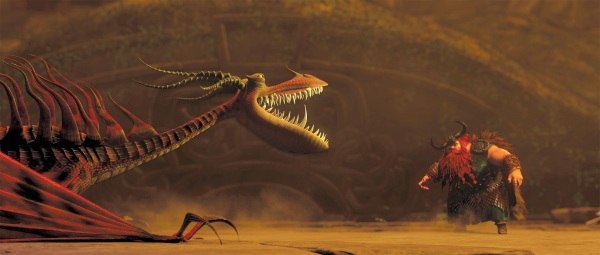Arnauld Lamorlette discusses his Academy Technical Achievement Award for production-capable bounce lighting methodology.
The ubiquitous impact of global illumination is undeniable: Everything looks richer, warmer and more natural. Indeed, at the Sci-Tech Awards dinner on Feb. 12 at the Beverly Wilshire Hotel, Eric Tabellion and Arnauld Lamorlette will receive Academy certificates of Technical Achievement for pioneering a production solution on Shrek 2. Lamorlette tells us all about the global illumination breakthrough, having spent eight years at PDI/DreamWorks after co-founding Buf Compagnie. He is currently CTO of the new technology company, The Bakery.
Bill Desowitz: What was your global illumination solution?
Arnauld Lamorlette: What happened is at the end of Shrek, before it was released, we had a lot of people on the payroll [at PDI] and had to use them. And there was no project. The thing is: we did some tests on The Matrix Reloaded. At the time we were considering doing effects potentially for [the two sequels] to do that as a bundle, and they wanted us to prove that we could deliver a photorealistic look. So during these tests, Eric Tabellion personally at home he developed a photon mapping global illumination approach, which was good but is slow and not usable in production. But here it was more for effects. So we did the test and at the same time at PDI/DreamWorks we developed a technique for subsurface scattering, which got an Academy Award, too, baking the first illumination in point clouds. This improved a lot the speed of subsurface scattering. So we thought of baking the first illumination in point clouds instead of using photons for global illumination. And then evaluate the point clouds to compute the global illumination. Basically, it's what most of the people are doing on the market today. Because we use point clouds, you have a very regular distribution and control and so you have something more stable and faster.
The second step was that since PDI was using proprietary nurbs surface (which have natural biometric UVs), so we could use textures instead of particles to record the first direct illumination. And the nice thing with textures is you can mip map them, and the whole production pipeline was designed for textures. We already had the software, interpolation and mip mapping and filtering. And because PDI was using nurbs instead of polygons, it was possible.
So we switched to textures and things got faster and we had a very natural way of filtering images and direct illumination. On top of that, there was the work technique, which is called irradiance caching, that we did a lot of improvement on. We found criteria that were faster and the fact that PDI/DreamWorks already had the ability to allow a two-pass approach.
BD: So what was the breakthrough here?
AL: The breakthrough was making it usable for large scale movies. Global illumination has been around for a long time, but, again, the big thing here was making it faster and faster and saving time. We did at least one or two order of magnitudes to make it workable in the pipeline. Otherwise, it would've been too costly and only usable for one or two shots. And the big thing we did to improve the speed was we tweaked the computation of specular. We computed the average value of specular in all directions. We identified which direction the most important light was coming from and considered only one vector of direction for the specular instead of sampling and computing the material hundreds or thousands of times in all directions. And that did the trick in most cases.
BD: So after the initial step of baking in the point clouds for global illumination, you were able to switch to textures and simplify the specular.
AL: Correct. By moving to textures, we got excited about the possibilities.
BD: And what has been the impact on DreamWorks and the rest of the industry?
AL: The image looks less CG and much closer to real life where objects become the source of light that bounce all over the place. As far as the rest of the industry, I wouldn't know, but the Academy investigated that. But the paper that Eric and I wrote, "An Approximate Global Illumination System for Computer-Generated Films," has been widely circulated.
BD: Every studio has its own global illumination technique, but the result is obviously more naturalistic lighting, which is why Roger Deakins could help out with Pixar's WALL•E and DreamWorks' How to Train Your Dragon and The Croods to make them look more like live-action cinematography.
AL: And now lighters can do it like a real live studio where you put bounce cards around the actors to make some nice smooth lights with gradients. But the big thing as far as DreamWorks was concerned was: "Yes, we're getting a better image, but at what cost?" It was an additional cost to the production, but what we demonstrated many times was that, even though one computation was, say, 30% slower overall, the number of iterations to get an approved image, artistically-speaking, was reached much faster. That's what sold it to management. But I have to say that DreamWorks took a risk.
BD: Tell us about your role as CTO of The Bakery, where you are partnered with Erwan Maigret.
AL: As far as I'm concerned, my goal is to provide interactive tools for lighters, which will be the first time that they will have such a tool dedicated to lighting. Today you can manipulate lights and render them in an engine but separately there is no actual lighting tool, so that is where I'm very excited. And we are also developing other software solutions for the 3-D/CG industry.
Bill Desowitz is senior editor of AWN & VFXWorld.










